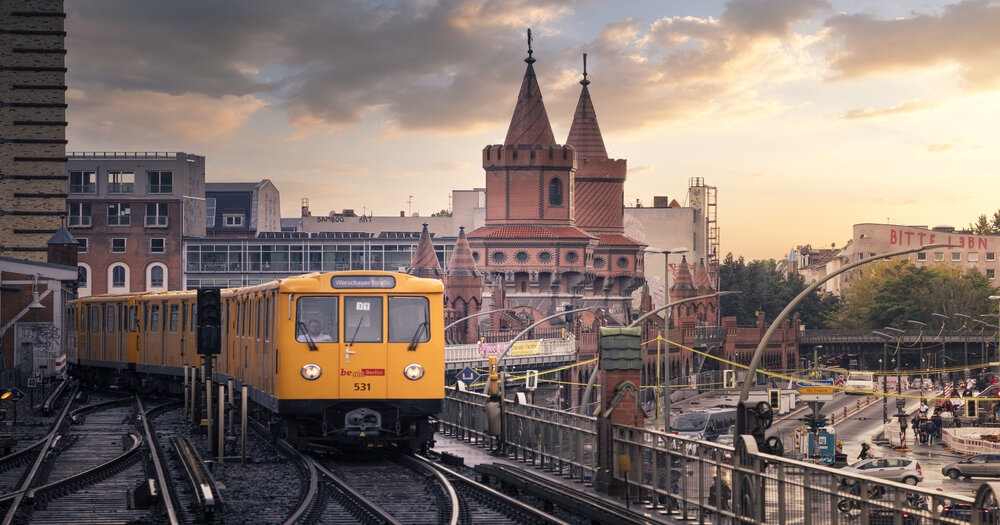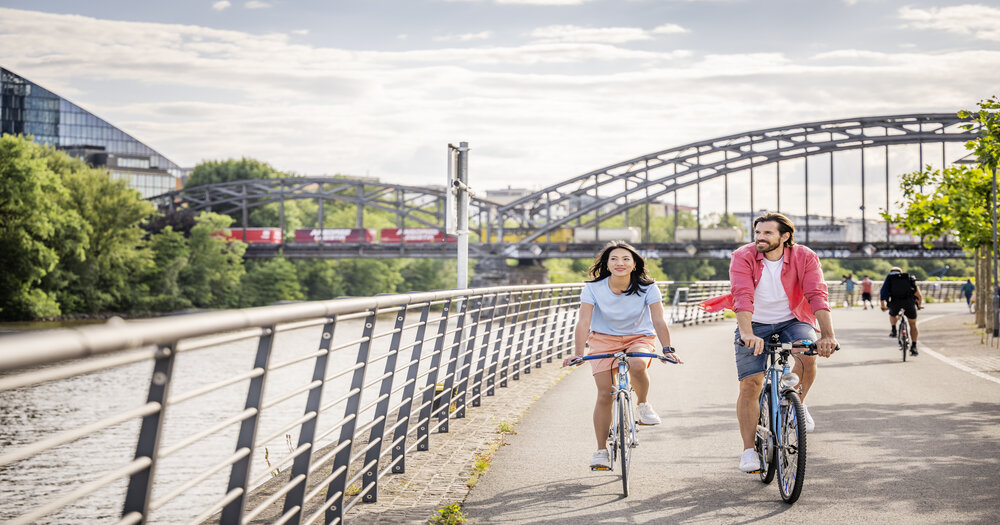Effortless travel by public transportation
Germany‘s cities combine sustainability with high living standards, making them ideal for eco-conscious travelers. Green spaces, hiking trails, and well-developed cycling and public transportation networks offer various ways to explore with minimal impact. Whether on foot, by bike, or by tram, discovering these vibrant destinations is easy and enjoyable. Learn more about sustainable travel in Germany and get some inspiration for your next green adventure.
Germany: sustainable travel by foot or rail
Germany boasts an extensive and affordable public transportation network, making travel across the country both convenient and budget friendly. With around 40,000 kilometers of railway and approximately 5,700 train stations, cities and regions are well connected.
Berlin offers a unique blend of history, culture, and modern city life, making it a fascinating destination to explore. One of the most convenient and sustainable ways to experience its rich heritage is by using public transportation.
A particularly special route for visitors is the U5 underground line, also known as the Museum Line. This sightseeing tour by rail starts at the Berlin Central Station and then takes you right through the Berlin-Mitte district to Berlin Hönow. There are 26 stations where passengers can hop off. Along the way are landmarks such as the Reichstag, the Brandenburg Gate, the Humboldt Forum, Museum Island, the Alexanderplatz, and the Tierpark Zoo. Three creatively redesigned underground stations have become part of Berlin’s vibrant art scene, just like the East Side Gallery in Berlin-Friedrichshain. This 1.3-kilometre-long section of the Berlin Wall invites you to stroll through its living street art and immerse yourself in its rich history.
Tip: With the Berlin WelcomeCard, the official tourist ticket for Berlin, you can use the underground for free and also enjoy discounts for numerous attractions along the way.

Discover German cities by bike
Depending on the federal state and transport association, bicycles can often be taken on public transportation at little or no extra cost, allowing for even greater flexibility. This makes it easy to combine different modes of transport.
The bicycle is one of the most suitable means of transport in the city, with many urban areas offering dedicated cycle paths, rental services, and routes leading through parks and into city centers. Münster is a prime example, often called the cycling city of Germany. With over half a million bicycles, nearly two per resident, Münster is a paradise for cyclists. The city’s well-developed infrastructure includes a bike highway along the promenade, scenic routes around the Aasee lake, and paths winding through lush greenery to landmarks such as St. Paul’s Cathedral, the Prinzipalmarkt, and the baroque palace, which houses the university. Short distances make cycling especially attractive, with most key locations no more than five kilometers apart.
